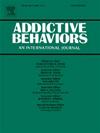6-19岁儿童和青少年可替宁和二手烟暴露率的趋势:20年来种族和社会经济因素的影响
IF 3.6
2区 医学
Q1 PSYCHOLOGY, CLINICAL
引用次数: 0
摘要
儿童和青少年时期暴露于吸烟或二手烟与各种疾病有关,这突出了探索二手烟暴露趋势的重要性。本研究通过性别、年龄、种族和收入水平分析了1999年至2020年可替宁(COT)水平和高COT患病率的趋势。方法采用1999-2000年至2017-2020年10个国家健康与营养检查调查(NHANES)周期的数据。我们计算了平均COT水平和二手烟暴露变化的比例,并使用线性和二次检验来评估这些变化的线性和非线性趋势。结果共纳入受试者23616人,年龄在6 ~ 19岁之间。COT水平从11.47 ng/ml降至6.17 ng/ml。女性高可替宁患病率由14.02%降至6.19%,男性高可替宁患病率由15.20%降至11.04%。可替宁水平因年龄组而异:16-19岁(从35.98 ng/ml到17.24 ng/ml)、13-15岁(从10.71 ng/ml到5.85 ng/ml)、10-12岁(从1.24 ng/ml到0.27 ng/ml)和6-9岁(从0.59 ng/ml到0.40 ng/ml)。PIR≤100%组(21.03% ~ 12.66%)、100% ~ 299% PIR组(13.84% ~ 8.31%)、300% ~ 499 % PIR组(9.88% ~ 8.96%)的高COT患病率均呈下降趋势。结论随着时间的推移,COT水平和高COT患病率呈下降趋势。在收入水平较低的儿童和青少年中,COT水平和高COT患病率较高。与其他年龄组相比,16 - 19岁的青少年有较高的COT水平和较高的COT患病率。本文章由计算机程序翻译,如有差异,请以英文原文为准。
Trends of cotinine and secondhand smoke exposure rates in children and adolescent aged 6–19 years: Impact of race and socioeconomic factors over two decades
Background
Exposure to smoking or secondhand smoke during childhood and adolescence is linked to various diseases, highlighting the importance of exploring trends in secondhand smoke exposure. Our study examines trends in cotinine (COT) levels and the prevalence of high COT from 1999 to 2020, analyzing the data by gender, age, race, and income level.
Methods
In this analysis, data from ten National Health and Nutrition Examination Survey (NHANES) cycles, conducted from 1999–2000 to 2017–2020, were utilized. We calculated the mean COT levels and the proportion of secondhand smoke exposure changes, and used linear and quadratic tests to assess the linear and nonlinear trends in these changes.
Results
A total of 23,616 participants aged 6 to 19-year-old were included. COT levels, decreased from 11.47 ng/ml to 6.17 ng/ml. The prevalence of high cotinine in females decreased from 14.02 % to 6.19 %, and in males, it decreased from 15.20 % to 11.04 %.Cotinine levels varied by age group: 16–19 years (from 35.98 ng/ml to 17.24 ng/ml), 13–15 years (from 10.71 ng/ml to 5.85 ng/ml), 10–12 years (from 1.24 ng/ml to 0.27 ng/ml), and 6–9 years (from 0.59 ng/ml to 0.40 ng/ml).The prevalence of high COT in the ≤ 100 % PIR group (from 21.03 % to 12.66 %), 100 %-299 % PIR group (from 13.84 % to 8.31 %), and 300 %-499 % PIR group (from 9.88 % to 8.96 %) all showed a declining trend.
Conclusion
The trends in COT levels and the prevalence of high COT showed a declining pattern over time. COT levels and the prevalence of high COT were higher among children and adolescents with lower income levels. Adolescents aged 16 - 19 had significantly higher COT levels and a higher prevalence of high COT compared to other age groups.
求助全文
通过发布文献求助,成功后即可免费获取论文全文。
去求助
来源期刊

Addictive behaviors
医学-药物滥用
CiteScore
8.40
自引率
4.50%
发文量
283
审稿时长
46 days
期刊介绍:
Addictive Behaviors is an international peer-reviewed journal publishing high quality human research on addictive behaviors and disorders since 1975. The journal accepts submissions of full-length papers and short communications on substance-related addictions such as the abuse of alcohol, drugs and nicotine, and behavioral addictions involving gambling and technology. We primarily publish behavioral and psychosocial research but our articles span the fields of psychology, sociology, psychiatry, epidemiology, social policy, medicine, pharmacology and neuroscience. While theoretical orientations are diverse, the emphasis of the journal is primarily empirical. That is, sound experimental design combined with valid, reliable assessment and evaluation procedures are a requisite for acceptance. However, innovative and empirically oriented case studies that might encourage new lines of inquiry are accepted as well. Studies that clearly contribute to current knowledge of etiology, prevention, social policy or treatment are given priority. Scholarly commentaries on topical issues, systematic reviews, and mini reviews are encouraged. We especially welcome multimedia papers that incorporate video or audio components to better display methodology or findings.
Studies can also be submitted to Addictive Behaviors? companion title, the open access journal Addictive Behaviors Reports, which has a particular interest in ''non-traditional'', innovative and empirically-oriented research such as negative/null data papers, replication studies, case reports on novel treatments, and cross-cultural research.
 求助内容:
求助内容: 应助结果提醒方式:
应助结果提醒方式:


